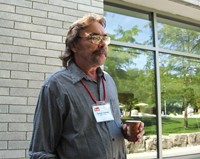Advertisement
Grab your lab coat. Let's get started
Welcome!
Welcome!
Create an account below to get 6 C&EN articles per month, receive newsletters and more - all free.
It seems this is your first time logging in online. Please enter the following information to continue.
As an ACS member you automatically get access to this site. All we need is few more details to create your reading experience.
Not you? Sign in with a different account.
Not you? Sign in with a different account.
ERROR 1
ERROR 1
ERROR 2
ERROR 2
ERROR 2
ERROR 2
ERROR 2
Password and Confirm password must match.
If you have an ACS member number, please enter it here so we can link this account to your membership. (optional)
ERROR 2
ACS values your privacy. By submitting your information, you are gaining access to C&EN and subscribing to our weekly newsletter. We use the information you provide to make your reading experience better, and we will never sell your data to third party members.
Policy
Vigilance Required
by A. Maureen Rouhi
March 3, 2014
| A version of this story appeared in
Volume 92, Issue 9
Suspicions of sexism roiled the theoretical chemistry community last month when organizers of the 15th International Congress of Quantum Chemistry (ICQC) posted a partial list of speakers. The all-male list prompted theoretical chemists Emily A. Carter of Princeton University; Laura Gagliardi of the University of Minnesota, Twin Cities; and Anna Krylov of the University of Southern California to urge a boycott of the conference for its “gender-biased discriminatory practices.”
Gender inequity continues to persist in science. Until it disappears, we all must remain ready to expose it, because exposure leads to awareness, which improves fairness.
The 15th ICQC will be held in China in June 2015. It is being organized by chemistry professor Zhigang Shuai of Tsinghua University, under the sponsorship of the International Academy of Quantum Molecular Science. The academy’s president is Josef Michl, a chemistry professor at the University of Colorado, Boulder. The boycott call, he says, could be pivotal “in the long and difficult struggle that women have faced in science in general.” In a letter to academy members, he thanked Carter, Gagliardi, and Krylov for “raising a well-justified objection.” He also apologized for the “premature public release of a partial speaker list.”
“It is really terrible that this happened,” says Kendall N. Houk about the events that led to the boycott call. Houk is a chemistry professor at the University of California, Los Angeles, and an invited speaker. “But at least it has catalyzed a visible uproar and vivid reminder that chemists need to keep vigilant to avoid lapsing into old, bad habits that continue to disadvantage women scientists.” Houk says female members usually make up at least 25% of his research group. “They are becoming excellent computational chemists, and I look forward to their being speakers at future ICQC meetings.”
“The majority of the theoretical chemistry community is welcoming to female scientists,” says Sharon Hammes-Schiffer, a chemistry professor at the University of Illinois, Urbana-Champaign, and an invited speaker. However, she adds, certain pockets “have cultures that are less welcoming to female scientists,” and people must speak up and point out unfairness when it is apparent, as in the case of the 15th ICQC’s all-male partial speaker list.
“Despite increasing awareness, biases are still prevalent in certain situations,” Hammes-Schiffer says. The boycott petition and the ensuing discussions will force people to examine their subconscious biases and to behave and make decisions in a manner that will lead to change, she adds. “As more women move into leadership positions and as the gender ratio continues to become more balanced, the culture will shift. Until then, we need to remain vigilant and to train our students and postdocs in a way that ensures that future generations will create a culture that is equally welcoming to both genders.”
In the meantime, the list of speakers for the 15th ICQC has evolved. To date, of 33 invited speakers, seven are women, a larger share than in previous ICQCs.
Whether this representation fairly reflects women’s participation in the field is another question. Michl says one has to look at those who lead research groups because they would be the pool of potential speakers. An educated guess could come from examining the corresponding authors in journals that publish only theoretical chemistry. In the 2013 issues of the Journal of Chemical Theory & Computation, the International Journal of Quantum Chemistry, Theoretical Chemistry Accounts, and the Journal of Computation Chemistry, women represented 11.49% of corresponding authors, for a 1:9 ratio of women to men, according to Michl. “The numbers clearly provide only a partial view, since much theory is published in journals that also publish articles from other subdisciplines; for example, the Journal of Physical Chemistry and the Journal of Chemical Physics,” he says.
Whatever is the true representation of women in the field, “it is low, and we need to continue to bring more women into theoretical chemistry,” Michl says. He notes that about 40% of graduate students in theory today are women. “This generation will run the show in a decade or two,” he says. “And the ratio of 1:9 will then be nothing but a bad memory.”
Views expressed on this page are those of the author and not necessarily those of ACS.




Join the conversation
Contact the reporter
Submit a Letter to the Editor for publication
Engage with us on Twitter